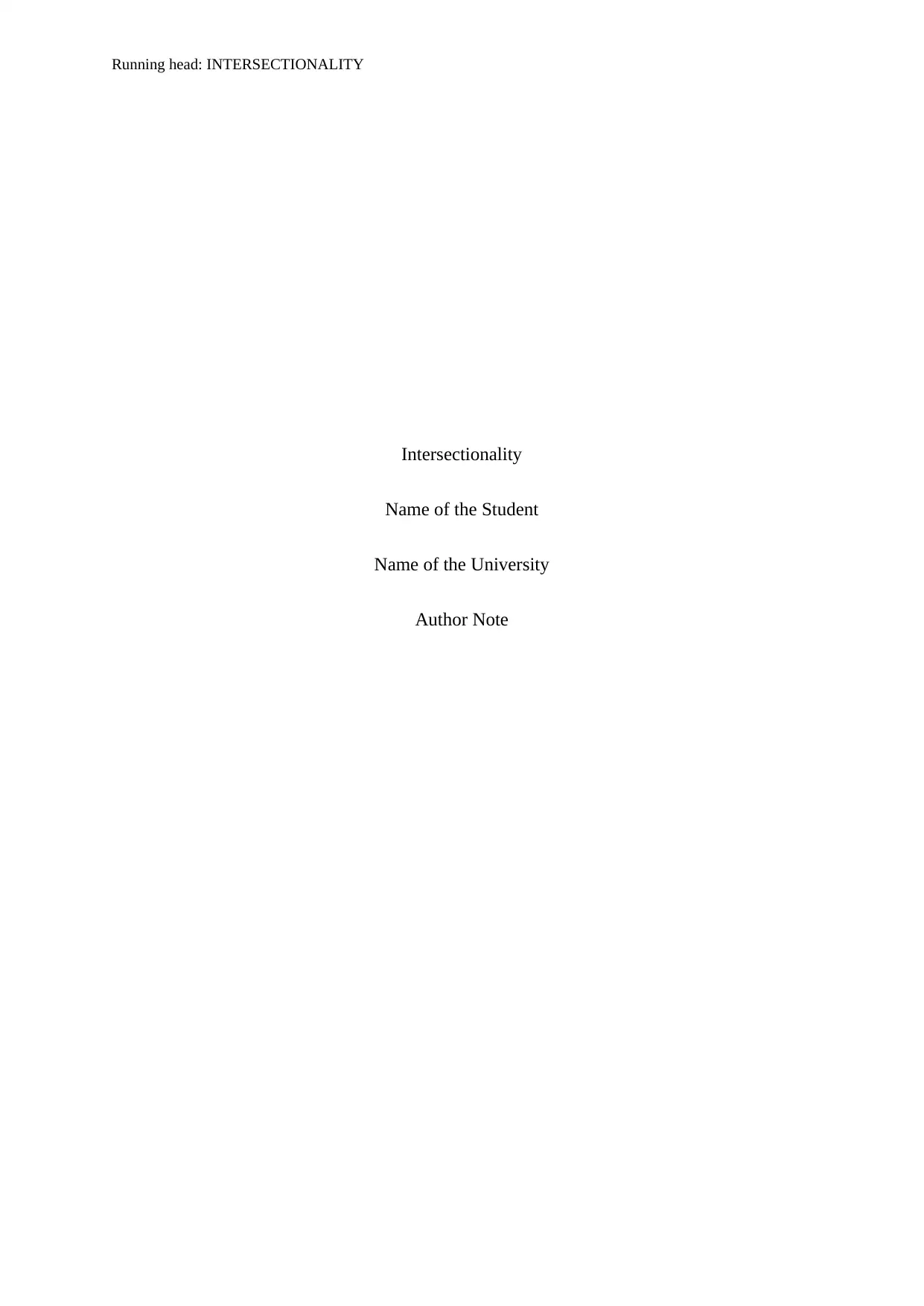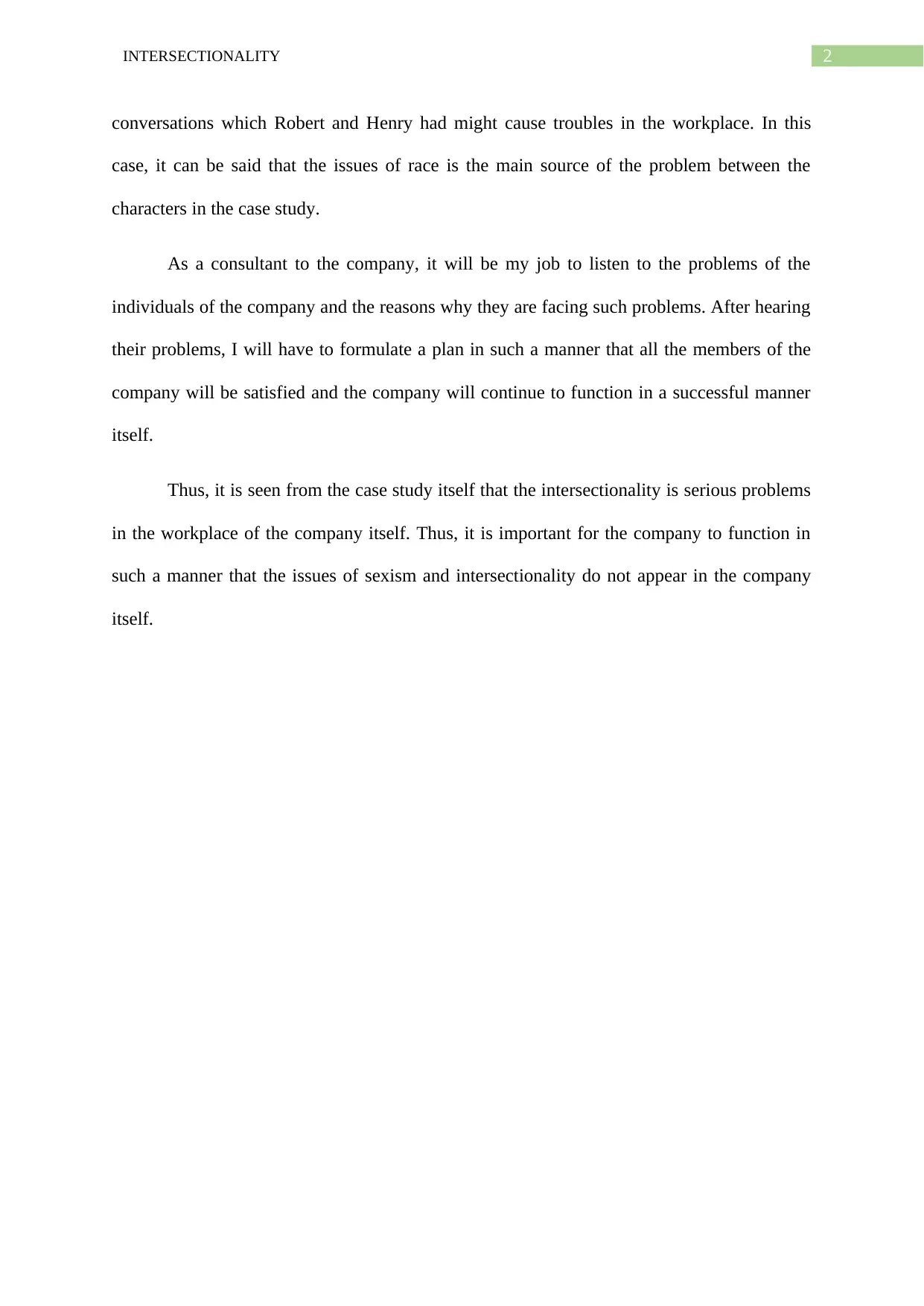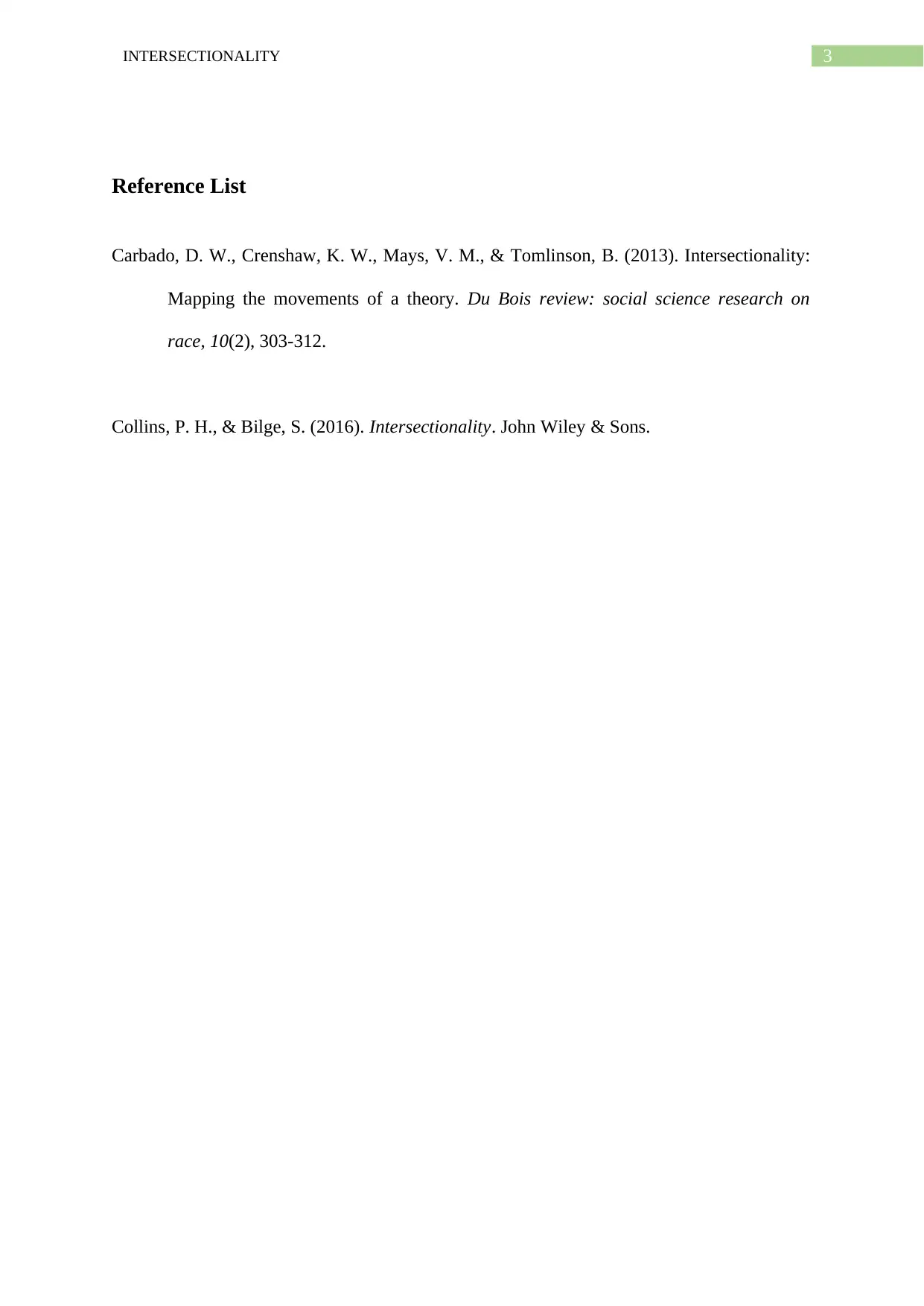Workplace Intersectionality: A Case Study Analysis and Solutions
VerifiedAdded on 2022/10/01
|4
|645
|43
Case Study
AI Summary
This assignment analyzes a case study focused on intersectionality in the workplace, examining how sexism and power dynamics manifest in a company setting. The study involves characters from diverse backgrounds (African-American, Hispanic, White, and Gay) and explores their perspectives on workplace issues, including eavesdropping and perceived discrimination. The assignment highlights the importance of understanding intersectionality to address the problems of sexism and discrimination in the workplace, and it also presents a consultant's approach to solving such issues. The consultant would listen to the issues of the employees and formulate a plan to satisfy all the members of the company, to ensure the company functions successfully.
1 out of 4






![[object Object]](/_next/static/media/star-bottom.7253800d.svg)